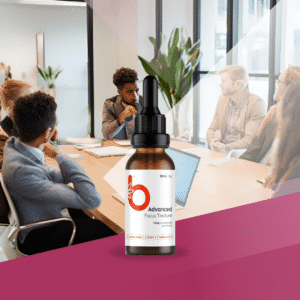
National Cleft and Craniofacial Awareness & Prevention Month
Mid-Month HC & GN Updates from Nurse Sherri July marks National Cleft and Craniofacial Awareness and Prevention Month. Children with cleft lip, palate, or other
Home » Blog » Medical Cannabis » Keys and Locks: Understanding the endoCannabinoid System

Maybe you haven’t heard yet, but humans (and all other mammals) have a network of receptors found throughout the brain and body that respond to the chemical compounds found in the cannabis plant. Our bodies even make chemical compounds that are very similar to the compounds found in the cannabis plant. This system is called the endoCannabinoid system (eCB system.) It happens to be named for the cannabis plant which ultimately led to the discovery of the eCB system in the late 1980’s. It is an important physiologic system in our bodies as its primary function is to promote and maintain a state of health in the body.
The 12th body system is primarily responsible for promoting and maintaining a process called homeostasis. Homeo-what? Homeostasis is the promotion of a stable internal environment despite constant external fluctuations. It is the body’s checks-and-balance system.
Need an example to understand homeostasis a bit better? Sure. Body temperature regulation (thermoregulation) is a good example of a homeostatic process in the body. Normal body temperature is 98.6 degrees Fahrenheit. Significant increases or decreases in body temperature can cause serious complications, so the body will typically try to maintain that 98.6 degree temperature by either producing heat if the body is too cold, or releasing heat if the body is too warm. Make sense? And yes, in case you were wondering — the eCB system does play a role in thermoregulation.
Researchers have discovered two primary cannabinoid (CB) receptors — CB1 and CB2. The CB1 receptors tend to be located in the nervous system, connective tissues, gonads, glands, and organs. The function of these receptors is dependent on the specific part of the body that it is located in. For example, the CB1 receptors found in the nerve endings act to reduce pain. CB1 receptors found in the amydala (the memory and emotional processing center in the brain) may help someone struggling with post-traumatic stress to forget. Conversely, when the CB1 receptor is stimulated in someone with dementia, it may help the person remember.
CB2 receptors are found throughout the immune system, and also in the spleen, liver, heart, kidneys, bones, blood vessels, lymph cells, endocrine glands, and reproductive organs. CB2 receptors primarily act to reduce inflammation in the body which is essential in reducing symptoms of chronic conditions and diseases (but not limited to) arthritis, Crohn’s disease, ulcerative colitis, and dementia.
Endogenous cannabinoids are the developed within the body. Researchers have identified two such endo-cannabinoids — anandamide and 2-Arachidonoylglycero, or simply 2-AG.
Endocannabinoids should be thought of as keys to open the locks that are the CB receptors. They are also known as neurotransmitters. When these keys open the locks, a chemical message is sent along the neurons, or nerve cells in the body. A process called neurotransmission. Communication happens between the brain and the body, and functional changes happen from there.
Anandamide is named for the sanskrit word for bliss. In fact, anandamide is often called the bliss molecule. It is a chemical messenger that looks a lot like it’s phytocannabinoid cousin — Delta-9-tetrahydrocannabinol — also known as THC. You may know THC as the favorite psychoactive phytocannabinoid of cannabis users everywhere. We’ll take a closer look at THC shortly.
Anandamide tends to bind with CB1 receptors found in the central nervous system which is comprised of the brain and spinal cord. It is thought that anandamide is responsible for the runner’s high and other euphoric, or blissful states of being. Hence its name.
Note the similar structure between these two molecules – Endocannabinoid Anandamide on the left; Phytocannabinoid THC on the right – Photo Credit: Google Images
2-AG is also a neurotransmitter, or chemical messenger that may have gotten the raw deal in the naming department, but it’s a powerhouse in it’s own right. It’s reported to be more plentiful than anandamide, and tends to interact with the CB2 receptors found throughout the peripheral nervous system. It plays an important role in many functions including sleep, memory, appetite, reproduction, and neuroprotection. This is not an exhaustive list by any means.
It’s possible for someone to have an endocannabinoid deficiency, which is to say that the body may not be capable of producing its own cannabinoids efficiently. Thankfully, the mammalian body evolved with plants that are meant to nourish the eCB system. The most well-known plant of course is the cannabis plant. However, it should be noted that other plants do produce non-psychoactive phytocannabinoids, such as echinacea.
In case you haven’t figured it out, phyto- means plant. So phytocannabinoid means plant-based cannabinoid. We’ll explore the two most famous phytocannabinoids — THC and CBD.
THC is a psychoactive phytocannabinoid that binds primarily to the CB1 receptors. Rather, it is a key provided by nature to unlock the CB1 receptors found in the central nervous system. Euphoria, or bliss is a common effect when the brain receptors are stimulated. As is reduction in pain, appetite stimulation, sleep promotion, and improved mood. Again, this is not an exhaustive list of benefits.
We’ve spent a lot of time discussing benefits, so let’s look at one very common, very preventable risk. Introducing too much THC to a sensitive, or even a well-functioning eCB system could lead to paranoia. To this end, it’s important to start low and go slow. Meaning — start with a low dose of THC and increase slowly. Microdosing is the best way to reduce the risk of becoming paranoid.
Good news! The last cannabinoid cousin that we’re gonna discuss could help reduce cannabis-induced paranoia. CBD mediates the effect of THC. So if you do find yourself a bit paranoid after taking in too much THC, take some CBD, drink some water, eat some food, and rest. Cannabis will not cause you to stop breathing, so you cannot overdose. But having a paranoid episode is definitely real and should be avoided if possible. Remember to start low and go slow.
CBD is a non-psychoactive phytocannabinoid that is also a powerhouse in terms of promoting a healthy state of being. It is not a key for the CB receptor locks, but it appears to hang out and stimulate other types of neurotransmitters. For example, CBD likes to interact with serotonin receptors and appears to be effective in treating anxiety as a result. Most notably, CBD appears to be effective in reducing seizures in people afflicted with intractable seizure disorders.
I hope that this tale of keys, locks, and cousins has helped you understand the endoCannabinoid System a bit better. Here’s to your health in nourishing your own unique eCB system and promoting optimal homeostatic functioning. Be well, you deserve it!
Featured Photo Credit: Google Images
Cannabinoid Science 101: What is Anandamide? (2017, April 21).
How CBD Works. (n.d.).
Sulak, D. (2015, February). Working to Reform Marijuana Laws.
Wilcox, A. (2017, July 04). 2-Arachidonoylglycerol (2-AG): The Body’s Own Cannabis.

Mid-Month HC & GN Updates from Nurse Sherri July marks National Cleft and Craniofacial Awareness and Prevention Month. Children with cleft lip, palate, or other

Many individuals have expressed the opinion that there is a notable lack of research in the field of cannabis therapeutics, and we are inclined to

Let’s honor the past and continue advocating for a better future. The movement for medical cannabis, an instrumental part of modern healthcare, has a
Holistic Caring® is an umbrella of progressive health professionals who provide products & services to support and nourish the endocannabinoid system.
We serve the plant, the people and the planet for hope and inspiration for growth and healing to the patients we serve and the practitioners we work with.
We provide Educational Programs & Nurse Coaching Services.
Contact
© 2024 All rights reserved – Content Agreement – Privacy Policy – Terms – Accessibility Statement–Returns/Shipping/Cancellation
